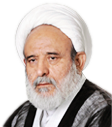The country's current population is estimated at 10,211,437. Guinea's territory has a curved shape, with its base at the Atlantic Ocean, inland to the east, and turning south.
The base borders Guinea-Bissau and Senegal to the north, and Mali to the north and north-east; the inland part borders Côte d'Ivoire to the south-east, Liberia to the south, and Sierra Leone to the west of the southern tip.
Its water sources include the Niger, Senegal, and Gambia rivers. Conakry is the capital, seat of the national government and largest city.
Government and politics
Politics of Guinea takes place in a framework of a presidential republic, whereby the President of Guinea is both head of state, head of government, and the commander in chief of the Guinean Military.
The president is elected to a maximum of two 7 year terms, although the current Guinee Lansana Conte, who has been in power since 1984, continues to run for further terms.
Executive power is exercised by the president and members of his cabinet. To be elected president of Guinea a candidate must be a Guinean born citizen by birth, be at least 35 years of age and must be able to speak and read the French language.
Legislative power is vested in the National Assembly. The National Assembly has 114 members, elected for a four year term, 38 members in single-seat constituencies and 76 members by proportional representation.
Guinea is a one party dominant state with the Party of Unity and Progress in power. Opposition parties are allowed, but are widely considered to have no real chance of gaining power.
Ahmed Tidiane Souare was appointed prime minister in May 2008.
He replaced Lansana Kouyate, a former UN diplomat who had been appointed by President Conte fifteen months earlier under a deal to end a general strike against the president's rule.
Following his appointment, Mr Souare said he planned to continue changes begun by Mr Kouyate and "to restore authority to the state because we're in a state of disarray."
He is a member of President Conte's Party of Unity and Progress and has previously served as minister of mines and geology and as minister of state for higher education and scientific research.
Regions and prefectures
Guinea is divided into seven administrative regions and subdivided into thirty-three prefectures. The national capital, Conakry, ranks as a special zone.
Largest cities
-
-
-
-
-
-
-
-
Geography
At 94,919 square miles (245,857 km²), Guinea is roughly the size of the United Kingdom and slightly smaller than the U.S. state of Oregon. There are 200 miles (320 km) of coastline. The total land border is 2,112 miles (3,399 km). The countries bordering Guinea include Côte d'Ivoire (Ivory Coast), Guinea-Bissau, Liberia, Mali, Senegal, Sierra Leone.
The country is divided into four main regions: the Basse-Cote lowlands in the west along the coast, populated mainly by the Susu ethnic group; the cooler, mountainous Fouta Djalon that run roughly north-south through the middle of the country, populated by Peuls, the Sahelian Haute-Guinea to the northeast, populated by Malinkes, and the forested jungle regions in the southeast, with several ethnic groups.
Guinea's mountains are the source for the Niger, the Gambia, and Senegal Rivers, as well as the numerous rivers flowing to the sea on the west side of the range in Sierra Leone and Ivory Coast.

The highest point in Guinea is Mont Nimba at 5,748 feet (1,752 m). Although the Guinean and Ivorian sides of the Nimba Massif are a UNESCO Strict Nature Reserve, the portion of the so-called Guinean Backbone continues into Liberia, where it has been mined for decades.
Economy
Richly endowed with minerals, Guinea possesses over 25 billion metric tons (MT) of bauxite, and perhaps up to one-half of the world's reserves. In addition, Guinea's mineral wealth includes more than 4-billion tons of high-grade iron ore, significant diamond and gold deposits, and undetermined quantities of uranium. Guinea has considerable potential for growth in the agricultural and fishing sectors.
Soil, water, and climatic conditions provide opportunities for large-scale irrigated farming and agro industry. Possibilities for investment and commercial activities exist in all these areas, but Guinea's poorly developed infrastructure and rampant corruption continue to present obstacles to large-scale investment projects.
Joint venture bauxite mining and alumina operations in northwest Guinea historically provide about 80% of Guinea's foreign exchange. The Compagnie des Bauxites de Guinea (CBG) is the main player in the bauxite industry.
CBG is a joint venture, in which 49% of the shares are owned by the Guinean Government and 51% by an international consortium led by Alcoa and Alcan. CBG exports about 14 million metric tons of high-grade bauxite every year.
The Compagnie des Bauxites de Kindia (CBK), a joint venture between the Government of Guinea and Russki Alumina, produces some 2.5 million MT annually, nearly all of which is exported to Russia and Eastern Europe.
Dian Dian, a Guinean/Ukrainian joint bauxite venture, has a projected production rate of 1 million MT per year, but is not expected to begin operations for several years.
The Alumina Compagnie de Guinée (ACG), which took over the former Friguia Consortium, produced about 2.4 million tons of bauxite in 2004, which is used as raw material for its alumina refinery.
The refinery supplies about 750,000 MT of alumina for export to world markets. Both Global Alumina and Alcoa-Alcan have signed conventions with the Government of Guinea to build large alumina refineries with a combined capacity of about 4 million MT per year.
Diamonds and gold also are mined and exported on a large scale. AREDOR, a joint diamond-mining venture between the Guinean Government (50%) and an Australian, British, and Swiss consortium, began production in 1984 and mined diamonds that are 90% gem quality.
Production stopped from 1993 until 1996, when First City Mining of Canada purchased the international portion of the consortium. By far, most diamonds are mined artisanally.
The largest gold mining operation in Guinea is a joint venture between the government and Ashanti Gold Fields of Ghana. SMD also has a large gold mining facility in Lero near the Malian border.
Other concession agreements have been signed for iron ore, but these projects are still awaiting preliminary exploration and financing results.

The Guinean Government adopted policies in the 1990s to return commercial activity to the private sector, promote investment, reduce the role of the state in the economy, and improve the administrative and judicial framework.
Guinea has the potential to develop, if the government carries out its announced policy reforms, and if the private sector responds appropriately.
So far, corruption and favoritism, lack of long-term political stability, and lack of a transparent budgeting process continue to dampen foreign investor interest in major projects in Guinea.
Reforms since 1985 include eliminating restrictions on agriculture and foreign trade, liquidation of some parastatals, the creation of a realistic exchange rate, increased spending on education, and cutting the government bureaucracy.
In July 1996, President Lansana Conté appointed a new government, which promised major economic reforms, including financial and judicial reform, rationalization of public expenditures, and improved government revenue collection. Under 1996 and 1998 International Monetary Fund (IMF)/World Bank agreements, Guinea continued fiscal reforms and privatizations, and shifted governmental expenditures and internal reforms to the education, health, infrastructure, banking, and justice sectors.
Cabinet changes in 1999 as well increasing corruption, economic mismanagement, and excessive government spending combined to slow the momentum for economic reform. The informal sector continues to be a major contributor to the economy.
Transportation
The railway which used to operate from Conakry to Kankan, ceased operating in the mid-1980s. Domestic air services are intermittent. Most vehicles in Guinea are some 20 years old, and cabs are mostly any 4-door vehicle which the owner has designated as for hire.
Locals, nearly entirely without vehicles of their own, rely upon these taxis (which charge per seat) and small buses to take them around town and across the country.
There is some river traffic on the Niger and Milo rivers. Horses and donkeys are also found pulling carts, primarily to transport construction materials.
Demography
The population of Guinea is estimated at 9,947,814. Conakry, the capital and largest city, is the hub of Guinea's economy, commerce, education and culture.
Languages
The official language in Guinea is French. Other significant languages spoken are Fula, Maninka, Susu, Arabic, Insula, Kissi, Kpele, and Loma, pular.
Religion
2005 official statistics for Islam in Guinea estimate that 85% of Guinea's population are Muslim.

Culture
Like other West African countries, Guinea has a rich musical tradition. The group Bembeya Jazz became popular in the 1960s after Guinean independence.
Sports
Guinea's main sport is football (soccer) and although the national team has never made the FIFA World Cup, it has appeared at eight African Nations Cup finals; it was a runner-up in 1976 and reached the quarter-finals in 2004 and 2006.
The current national coach is Robert Nouzaret. Swimming is popular near the capital, Conakry, and hiking is possible in the Fouta Djallon region.
















